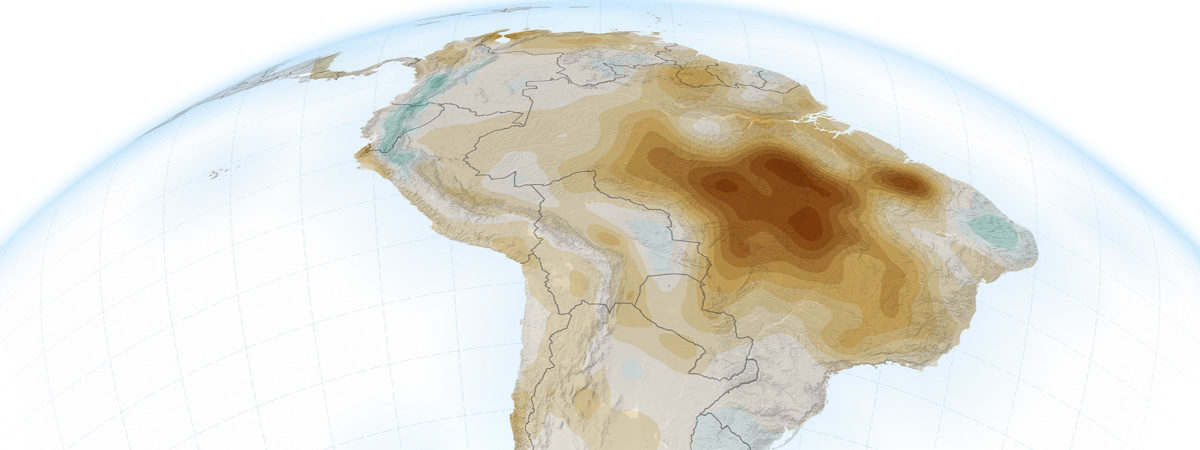- New research reveals that fires in the Amazon rainforest, used primarily to clear land for agriculture and ranching, are contributing to drier conditions caused by the emissions of climate-warming gases into the atmosphere.
- Fires release “black carbon,” which absorbs energy and causes temperatures to rise, as well as blocking the formation of clouds, creating drier conditions.
- The researchers caution that the rising demand for water combined with scarcer supplies could threaten the forest’s survival.
The burning of vegetation and the release of climate-warming gases into the atmosphere are conspiring to dry out the Amazon rainforest, according to a new study.
“We observed that in the last two decades, there has been a significant increase in dryness in the atmosphere as well as in the atmospheric demand for water above the rainforest,” Armineh Barkhordarian, an assistant researcher at NASA’s Jet Propulsion Laboratory (JPL) and the lead author of the study, said in a statement.
Fires in the Amazon captured the world’s attention in the late summer of 2019. Though a recent analysis demonstrated that most of the fires were burning on recently deforested land, not the forest itself, the release of “black carbon” into the atmosphere above the forest is still having a substantial impact. These fires, primarily set to clear the way for agriculture and pastures, feed a cycle in which droughts and fires will continue to be more likely.

Publishing their work Oct. 25 in the journal Scientific Reports, Barkhordarian and her colleagues used satellite-mounted instruments to come up with what’s known as the vapor pressure deficit, or VPD, across tropical South America. The VPD is the gap between the maximum amount of moisture the air can hold and how much moisture is actually there, and it’s been notching upward — meaning drier air in the Amazon — over the past few decades.
The team’s analysis leaves little doubt that humans are behind this precipitous change.
“In comparing this trend to data from models that estimate climate variability over thousands of years,” Barkhordarian said, “we determined that the change in atmospheric aridity is well beyond what would be expected from natural climate variability.”

In particular, the southern and southeastern parts of the Amazon, which are most affected by the push for new farm and grazing land, have been experiencing drier dry seasons that last longer. But even in the northern reaches of the forest, “mega droughts” punctuate the past 20 years, the most recent occurring in 2015.
Emissions of greenhouse gases like CO2 are part of the problem. As their concentrations rise in the atmosphere, they trap more energy, which warms the planet and leads to drier conditions. The sooty aerosols released from fires also absorb heat and hinder cloud formation.
To stay cool as the mercury rises, trees will pull in more water from the soil. Ordinarily, that water flows up through the trees, playing a vital role in transporting nutrients along the way. When it’s finally released from the top of the canopy, the moisture condenses into clouds, and much of it returns to the soil in the form of rain.

But if the earth has become too parched, it can disrupt the whole system.
“It’s a matter of supply and demand,” Sassan Saatchi, a senior research scientist at JPL and a co-author of the study, said in the statement. “With the increase in temperature and drying of the air above the trees, the trees need to transpire to cool themselves and to add more water vapor into the atmosphere.
“But the soil doesn’t have extra water for the trees to pull in,” he added.

Those more arid conditions make fires more likely, which in turn could dry the forest out even further. As water becomes a scarcer commodity, the forests themselves, along with some of the most biodiverse ecosystems on Earth that they support, could be in danger.
“Our study shows that the demand is increasing, the supply is decreasing,” Saatchi said, “and if this continues, the forest may no longer be able to sustain itself.”
Banner image of the vapor pressure deficit by Joshua Stevens/NASA Earth Observatory.
Citation:
Barkhordarian, A., Saatchi, S. S., Behrangi, A., Loikith, P. C., & Mechoso, C. R. (2019). A Recent Systematic Increase in Vapor Pressure Deficit over Tropical South America. Scientific Reports, 9(1), 15331. doi:10.1038/s41598-019-51857-8
FEEDBACK: Use this form to send a message to the author of this post. If you want to post a public comment, you can do that at the bottom of the page.
